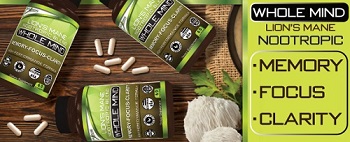How Layered Entity Structures Hide Ownership From Governments and Competitors
VANCOUVER, British Columbia — In an era defined by open corporate registries, mandatory beneficial ownership disclosures, and aggressive financial surveillance, privacy-seeking entrepreneurs and investors face a daunting challenge: how to protect their ownership interests from unnecessary exposure.
Layered entity structures—strategic combinations of companies, trusts, foundations, and nominees across multiple jurisdictions—have emerged as a legal and effective method to obscure ownership from both government overreach and competitive threats.
This press release explores how layered corporate structures are used lawfully to create strategic opacity while remaining compliant with global standards like FATCA, CRS, and AML regulations. It also features real-world case studies, jurisdictional insights, and critical considerations for anyone seeking to build anonymity and resilience into their business architecture.
What Is a Layered Entity Structure?
A layered entity structure refers to the use of two or more legal entities—often in different jurisdictions—to create distance between the beneficial owner and the operational or asset-holding company. These layers serve multiple purposes:
-
Separate control from ownership
-
Isolate liability
-
Enable jurisdictional arbitrage
-
Create privacy through nominee services
-
Delay or prevent tracing of ownership through public records
Each entity in the chain may serve a specific function, such as holding intellectual property, managing contracts, facilitating payments, or owning other companies. When structured correctly, ownership is obfuscated without breaching legal disclosure requirements to financial institutions or regulatory authorities.
Why Entrepreneurs Use Layered Structures in 2025
The pressure to disclose corporate ownership has grown. Governments are creating central registries, tax authorities demand cross-border financial reporting, and competitors scrape databases to track company ownership. In this environment, the benefits of layered structuring include:
-
Business confidentiality: Hide ownership from clients, suppliers, and partners.
-
Risk separation: Shield individual entities from liabilities incurred by others.
-
Strategic acquisitions: Purchase assets or negotiate contracts discreetly.
-
Asset protection: Prevent opportunistic lawsuits or politically motivated targeting.
-
Jurisdictional flexibility: Choose favorable legal, tax, and compliance environments.
When done legally, layered structures provide privacy and resilience—without violating transparency obligations to the relevant parties.
Case Study: Tech Founder Uses Multi-Layered IP Holding Structure
A Spanish AI developer who sold a software startup in 2021 later sought to create a new company without being linked to the original brand. He formed a Seychelles IBC to hold the new IP, owned by a Belize trust. A Nevis LLC served as the parent management entity. Through nominee directors at each level, no public registry linked him to the new brand. He disclosed the whole structure to his private bank in Liechtenstein, ensuring compliance. Today, his software is licensed globally while his identity remains protected.
Popular Layering Combinations in 2025
Modern layered structures typically combine entities in the following ways:
-
Nevis LLC > Seychelles IBC > UAE RAK ICC operating company: Combines privacy, legitimacy, and operational reach.
-
Panama foundation > Belize IBC > Mauritius bank account: Designed for holding wealth or receiving royalties.
-
Liechtenstein trust > Cyprus holding company > Estonian e-residency LLC: Ideal for EU expansion and digital businesses.
-
Marshall Islands company > Singapore corporate director > Swiss nominee banking relationship: For high-value asset protection and discretion.
Each layer serves a purpose: some shield ownership, others ensure regulatory compliance, and still others enable geographic or financial flexibility.
Jurisdictions That Enable Layered Privacy
Key to effective layering is the selection of jurisdictions that respect corporate confidentiality while supporting legal cross-border structuring. These include:
-
Nevis: Allows anonymous LLCs with private membership and charging order protection.
-
Belize: Strong trust and foundation laws with no public registries.
-
Seychelles: IBCs with nominee capabilities and simple annual filings.
-
Panama: Private interest foundations are widely used for wealth protection.
-
UAE (RAK ICC): Permits full foreign ownership and nominee directors.
-
Marshall Islands: Business corporations with no public disclosure mandates.
-
Liechtenstein: Trusts and foundations under EU-compatible privacy laws.
These jurisdictions often collaborate with compliant offshore banking institutions to ensure lawful use of layered structures.
Case Study: High-Net-Worth Family Office Builds Layered Structure Across Four Jurisdictions
A Central European family sought to restructure its international holdings for privacy and succession planning. They established a Liechtenstein foundation that owned a Panama IBC. The IBC, in turn, held equity in two operating companies in Cyprus and Singapore. Banking was split between Zurich and Dubai. Beneficial ownership was disclosed only to the banks, and nominee directors handled filings. The structure allowed for quiet, private wealth management, spanning five industries and three continents, without revealing the family’s identity in any public registry.
Layering for Competitive Advantage
In competitive sectors—such as biotech, fintech, and e-commerce—knowledge of a company’s actual ownership can inform rivals about strategic partnerships, IP development, or market entry. Layered structures shield:
-
Business acquisitions in stealth mode
-
Licensing or IP assignments under alternate identities
-
Investments in sensitive jurisdictions
-
R&D initiatives or confidential collaborations
With layered structures, even if the operating entity is uncovered, the full ownership tree remains protected—often requiring legal warrants or cross-jurisdictional cooperation to penetrate.
Compliant Anonymity: How Layering Respects Global Rules
Despite offering privacy, layered structures must comply with global regulations. This includes:
-
UBO disclosure to financial institutions: Banks require the whole ownership chain to open or maintain accounts.
-
Tax reporting: U.S. citizens file FATCA and FBAR; others comply with CRS and domestic rules.
-
AML and KYC compliance: All nominees and agents are subject to screening.
-
Economic substance rules: Some jurisdictions mandate local presence or activity.
-
Legal documentation: Power of attorney, trust deeds, and service agreements must be enforceable.
When these obligations are met, privacy is preserved without risk of criminal exposure.
Case Study: Real Estate Syndicate Uses Layered Structure to Disguise Capital Source
A group of investors in Eastern Europe sought to acquire distressed properties in Southern Spain, aiming to keep their capital origins undisclosed from competitors and landlords. A Nevis LLC managed the syndicate, which a Seychelles IBC owned, held in turn by a Belize trust. The Seychelles entity owned the Spanish real estate company. While all funds were reported to tax authorities, the Investment group remained invisible to local stakeholders, ensuring negotiation leverage and long-term asset insulation.
Digital Privacy and Layered Structures
In 2025, online businesses and digital entrepreneurs increasingly rely on layered entities for digital anonymity. Use cases include:
-
Registering domain names through offshore entities
-
Using legal wrappers for NFT or digital IP ownership
-
Receiving crypto payments through controlled wallets
-
Managing social media or digital content platforms without a name exposure
Jurisdictions such as Georgia, Estonia, and the UAE offer digital-friendly environments that integrate with global compliance frameworks while preserving identity separation.
Banking Through Layered Structures
Layered entities can open corporate bank accounts when proper documentation is presented. Best practices include:
-
Using banks in privacy-respecting jurisdictions like Switzerland, Mauritius, or Liechtenstein
-
Preparing notarized documents detailing the ownership structure
-
Ensuring legal agreements between entities and service providers
-
Maintaining KYC-ready records for audits or account reviews
Banks are increasingly open to these structures when accompanied by professional legal support and transparent documentation chains.
Risks of Poorly Executed Layering
Improper structuring or negligent providers can lead to exposure or asset loss. Risks include:
-
Nominees with no binding agreements
-
Use of blocked jurisdictions triggering financial exclusion
-
Failure to report UBO to banks or tax authorities
-
Lack of succession planning within trust or foundation documents
-
Legal disputes over control or ownership rights
Clients must work with reputable, licensed professionals with jurisdictional expertise and a focus on compliance.
The Amicus International Consulting Approach to Secure Layering
Amicus International Consulting designs compliant, multi-jurisdictional layering strategies tailored to each client’s needs. The firm specializes in:
-
Jurisdiction selection based on client nationality and purpose
-
Formation of companies, foundations, and trusts
-
Nominee director and shareholder appointments with enforceable documents
-
Banking integration for layered structures
-
Documentation of control through POAs, declarations of trust, and service agreements
Amicus clients benefit from legally defensible structures that are financially functional and strategically invisible.
Case Study: SaaS Startup Founder Separates Identity From Global Operation
A former executive from Canada launched a Software-as-a-Service platform targeting Asia and Europe. He registered a RAK ICC company in the UAE under a nominee director and layered it under a Panamanian foundation. Contracts were signed under the UAE entity. Payments were processed through a Georgian fintech platform. With no public links to the founder and all taxes handled via residency disclosures, the company scaled rapidly while the founder maintained complete anonymity and control.
Building a Legally Invisible Ownership Tree
To entirely obscure ownership, layered structures can employ:
-
Nominee directors at multiple levels
-
Foundation or trust as the top layer with private beneficiaries
-
Offshore banking with controlled signatory access
-
No personally identifiable information on corporate documents
-
Remote management and digital signatures via encrypted portals
These tools, combined with legal guidance, allow individuals to operate across borders without compromising safety, reputation, or strategic intent.
Conclusion: Strategic Privacy Through Legal Structuring
Layered entity structures remain one of the most powerful tools for protecting ownership in 2025. When appropriately executed, they shield individuals from hostile governments, aggressive competitors, and opportunistic lawsuits—without violating global legal or financial frameworks.
In a world of expanding registries and shrinking confidentiality, layering offers a strategic countermeasure for those who still believe privacy is a right, not a privilege. With guidance from experienced professionals, layered structures provide the perfect balance between visibility to those who matter—and invisibility to those who do not.
Contact Information
Phone: +1 (604) 200-5402
Email: info@amicusint.ca
Website: www.amicusint.ca
Anyone can join.
Anyone can contribute.
Anyone can become informed about their world.
"United We Stand" Click Here To Create Your Personal Citizen Journalist Account Today, Be Sure To Invite Your Friends.
Before It’s News® is a community of individuals who report on what’s going on around them, from all around the world. Anyone can join. Anyone can contribute. Anyone can become informed about their world. "United We Stand" Click Here To Create Your Personal Citizen Journalist Account Today, Be Sure To Invite Your Friends.
LION'S MANE PRODUCT
Try Our Lion’s Mane WHOLE MIND Nootropic Blend 60 Capsules
Mushrooms are having a moment. One fabulous fungus in particular, lion’s mane, may help improve memory, depression and anxiety symptoms. They are also an excellent source of nutrients that show promise as a therapy for dementia, and other neurodegenerative diseases. If you’re living with anxiety or depression, you may be curious about all the therapy options out there — including the natural ones.Our Lion’s Mane WHOLE MIND Nootropic Blend has been formulated to utilize the potency of Lion’s mane but also include the benefits of four other Highly Beneficial Mushrooms. Synergistically, they work together to Build your health through improving cognitive function and immunity regardless of your age. Our Nootropic not only improves your Cognitive Function and Activates your Immune System, but it benefits growth of Essential Gut Flora, further enhancing your Vitality.
Our Formula includes: Lion’s Mane Mushrooms which Increase Brain Power through nerve growth, lessen anxiety, reduce depression, and improve concentration. Its an excellent adaptogen, promotes sleep and improves immunity. Shiitake Mushrooms which Fight cancer cells and infectious disease, boost the immune system, promotes brain function, and serves as a source of B vitamins. Maitake Mushrooms which regulate blood sugar levels of diabetics, reduce hypertension and boosts the immune system. Reishi Mushrooms which Fight inflammation, liver disease, fatigue, tumor growth and cancer. They Improve skin disorders and soothes digestive problems, stomach ulcers and leaky gut syndrome. Chaga Mushrooms which have anti-aging effects, boost immune function, improve stamina and athletic performance, even act as a natural aphrodisiac, fighting diabetes and improving liver function. Try Our Lion’s Mane WHOLE MIND Nootropic Blend 60 Capsules Today. Be 100% Satisfied or Receive a Full Money Back Guarantee. Order Yours Today by Following This Link.






